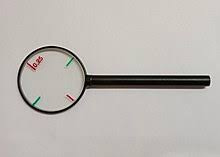For many optometrists, like Dr. Uzoma, certain patients who have been prescribed glasses seem to return with complaints despite receiving what appeared to be a good prescription. In Dr. Uzoma’s case, it was mostly patients with astigmatism who frequently came back, citing discomfort or headaches caused by their new glasses. Upon reflection, Dr. Uzoma realized the problem lay in his reliance on quick methods for refining his cylindrical axes and powers instead of the Jackson Cross Cylinder.
The Jackson Cross Cylinder (JCC) is an indispensable tool for refining the axis and power of cylindrical prescriptions. Yet, many optometrists, like Dr. Uzoma, struggle with its complexity and therefore opt for quicker, less precise methods. A similar situation is seen in the usage of autorefractors instead of the retinoscope in obtaining the objective refractive status of patients. The usage of these imprecise methods usually leads to the possibility of obtaining an unreliable result, yielding unsatisfied patients. However, if you are ready to lift your cross and master this skill, this article provides step-by-step instructions to help you refine your JCC technique and improve patient outcome.
Let us dive into the steps that helped Dr. Uzoma overcome these challenges.
Introduce the JCC in front of the patient only when you have refined the results from your objective refraction (preferably your retinoscope) to obtain the best sphere and have the circle of least confusion closest to the retina. This is done using the duochrome chart.
Start by refining the cylindrical axis by placing the handle of the JCC parallel to the axis of the cylinder on the trial frame. This means you should place the JCC on top of the trial cylindrical lens in such a way that the handle of the JCC is on the same line as the axis marks on the trial cylindrical lens (as shown in the video below). Ask the patient to focus on a particular letter in the line just above their best visual acuity (choose the letter yourself).
Have the patient compare the clarity of this target when you twirl the JCC from one position where the red mark is on the right to when it is on the left. Move the axis of the trial cylindrical lens in the direction of the red mark that coincides with the patient’s choice, initially in 15-degree increments, for patients with less than 2.00D of cylinder. Ask the comparison question again as your twirl the JCC again. Move the axis of the trial cylindrical lens again in the direction of the red mark that coincides with the patient’s choice. When the patient makes a choice that is opposite of their previous choice (a reversal), you will then progressively reduce the increment size by 15-10-5-3-1 degrees, while asking the comparison question and twirling, as the axis is refined. For patients with 2.00D of cylinders or more start with 5-degree increments, decreasing the increment size following a reversal by 5-3-1 degrees until the axis is refined. The axis is refined when there is no difference in the clarity of both positions.
Once this is achieved, it is now time to refine the power of the cylinder. You must now place the red mark on your JCC (not the handle) to align with the cylindrical mark on the trial lens your patient is wearing (as shown in the video below). Again, ensure the patient is focusing on a letter on the line above their best VA (select a different letter from one used for the axis).
Have the patient compare the clarity when you twirl from the position when the red mark of your JCC is sitting directly on the mark on the trial cylindrical lens with when the green (or black/white) mark is sitting on the same position. If the patient prefers the first position, you should increase the cylindrical power in 0.25 steps. If the patient prefers the second position, you should decrease the cylindrical power also in 0.25 steps. Always remember to add 0.25 to the sphere for every 0.50 increment in the cylinder and remove 0.25 from the sphere for every 0.50 decrease in cylinder power to retain the position of the circle of least confusion closest to the retina. The power of the cylinder is refined when there is no difference in the clarity of both positions.
Mastering the JCC may seem daunting at first, but as with any skill, practice leads to precision. Every optometrist has their "cross" to bear, and for Dr. Uzoma, mastering the JCC was his. Although it felt burdensome at first, it became the very tool that transformed his practice, reducing patient complaints and improving satisfaction. For optometrists committed to providing the best care, the JCC is an indispensable tool and is worth mastering. It ensures your patients receive both clarity and comfort, which should be the goal of every refraction.
Contributors:
Meet Chima Odoemenam, a dedicated clinical optometrist with a passion for both eye care and the art of storytelling. When he's not examining eyes at Eye Foundation Hospital, Chima is wielding a keypad to break down eye complexities for anyone—literally anyone. If you enjoyed this piece and yearn for more insights into the world of eyecare, Chima welcomes you to follow this page.
Emeka Uzor is an optometrist, a creative writer, and an entrepreneur. When he's not swinging the JCC to refine lenses he's flipping the pages of a philosophy book or writing a thesis on his WhatsApp status on how to make society better or booking his next vacation. Emeka believes in the dignity of the human person and the resilience of the world to overcome existential threats.
Duru Franklin Ifeanyi is an Optometrist in Abuja, Nigeria, specializing in Optometry Education. He's a Doctor of Optometry, member of Optometry Scholars Academic Forum, and has notable achievements in international journal publication, leadership advocacy, and academic excellence. His interests include teaching, reading, and graphic design.








